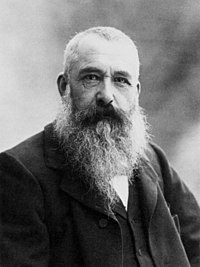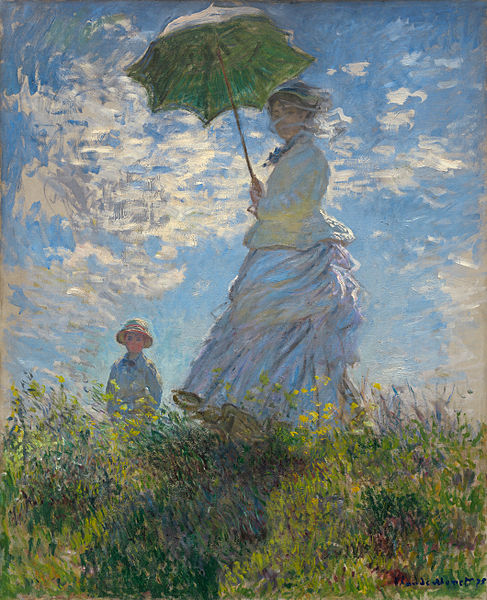Claude
Monet (14 November 1840 – 5 December 1926) was a founder of French
impressionist painting, and the most consistent and prolific practitioner of
the movement's philosophy of expressing one's perceptions before nature,
especially as applied to plein-air landscape painting.
Claude
Monet was born in Paris, France on November 14, 1840. He was the second child
of Louise-Justine Aubry and Claude Adolphe Monet. In 1845, the Monet family
settled near the ocean in Ingouville, France.
In 1851,
Claude began attending school. He studied many subjects including art. When he
was a young teenager it became apparent he had artistic ability. Claude would
draw caricatures of his teachers on his schoolwork. Claude soon began to charge
people to draw their caricatures and was able to make a steady income.
Claude's
mother died on January 28, 1857. The Monet family soon moved to Le Havre,
France. A year later the young artist met landscape painter Eugene-Louis
Boudin, a mentor who first introduced Claude to Plein Air (outdoor) painting.
In 1860
Monet was drafted into the military and sent to Algeria. During these years of
service Monet did not paint at all. Upon his return to Paris he picked up where
he left off and began painting again. Monet also met Camille Doncieux in Paris,
and then married her in 1870. Camille modeled for many of his paintings.
Monet
became known as an "Impressionist" - a title derived from his
painting, "Impression, Sunrise ". The work has an unfinished look,
which was very different from the paintings of artists who lived before him.
The brush strokes were lively and spontaneous, capturing the feeling of the
moment. He said, "Landscape is nothing but an impression, and an
instantaneous one, hence this label that was given us, by the way because of
me."
Claude
Monet, Impression, soleil levant
Claude
Monet, The Cliff at Étretat after the Storm, 1885
Claude
Monet, Woman with a Parasol, (Camille and Jean Monet), 1875
In his
later works Monet continued to capture the affect of light. Sometimes he would
paint the same object over and over again, but at different times of day or
year. Examples of these works include his haystacks, morning views of the
Seine, the Gare Saint-Lazare, Poplars, the Thames, Rouen Cathedral, and his
celebrated series of water lilies.
Claude
Monet died in Giverny, France on December 5, 1926. It took many years for
people to appreciate his work. Today, the art of Monet is an inspiration to
many artists around the world.




No comments:
Post a Comment